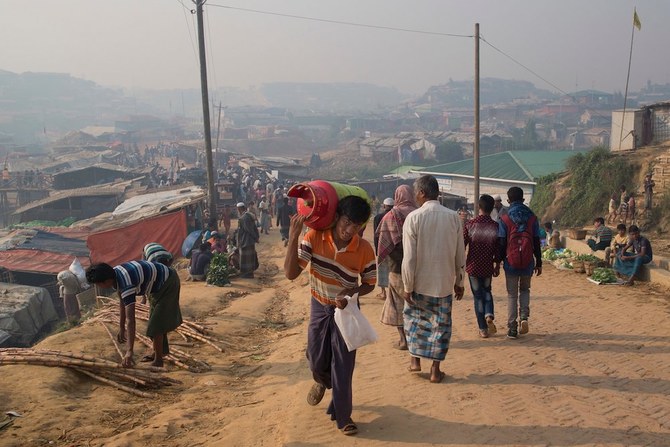Is one massacre not enough for the Rohingya?

https://arab.news/p4dhx
What aid workers on the ground in Cox’s Bazar had long dreaded has finally come to pass — the first positive tests for COVID-19. At least one of the cases was an indigenous Bangladeshi, and at least one other was a Rohingya refugee.
It is unclear whether these people were identified and tested before they had the chance to pass the virus on to those around them, or whether the virus is now silently incubating and transmitting asymptomatically through the population in and around the camps. If the latter, there is little hope of stopping it now. Cox’s Bazar is the most densely populated refugee camp in the world, and the limited and shared water and sanitary facilities means that isolating anyone is a real physical challenge. If the former, it is only a matter of time before the virus arrives from a different source.
There is an early spike in cases in Bangladesh, and the situation is as expected; the local authorities are having a tough time imposing the necessary measures to contain the spread. They simply lack the resources to do so effectively.
The consequences of the arrival of the virus in the camps will inevitably be desperate. There are exactly zero intensive care beds available, and little hope of Bangladesh being able to provide any. As Dr. Shamim Jahan, health director for the international aid group Save the Children, put it: “There are only an estimated 2,000 ventilators in all of Bangladesh, serving a population of 160 million people.” The viral infection is spreading through the rest of the country, so each and every one of those ventilators will be needed by Bangladeshi citizens. The government will simply have no ability to make any of them available to the refugees.
Once the virus gets in, it will rip through the population — there is probably nowhere in the world with a population living in conditions so perfect for viral transmission.
Dr. Azeem Ibrahim
In other words, keeping the virus out of the camps is going to be a Sisyphean task even if we are lucky enough to contain the first occurrences. Once the virus gets in, it will rip through the population — there is probably nowhere in the world with a population living in conditions so perfect for viral transmission. And once people start getting sick, those who are sick enough to need medical attention will probably die.
The mortality rates in Italy and Spain neared 10 percent because medical facilities were overwhelmed, and many people who needed intensive care and ventilators were not able to get them, so the mortality rate in Cox’s Bazar can easily reach the maximum hospital admission level expected by medical experts, at up to 25 percent. And since we would expect nearly all the refugee population to get the virus once it starts spreading, in a population of 1 million people we are looking at over 100,000 likely to die. And that is before we start to consider existing health conditions in this stressed population.
To make matters worse, even the survivors may serve as a reservoir for the virus for at least some time, meaning that the surrounding population, and indeed even the government of Bangladesh who so far have been very generous in hosting the refugees, may turn more hostile and seek to further isolate the group.
Thus, if left to develop on its own, this will easily become an even more gruesome humanitarian disaster than the genocidal ethnic cleansing the Rohingya have already suffered at the hands of the Myanmar army in the lands of their birth. This situation is beyond the capacity of the government of Bangladesh to handle; the international community, through the normal UN agencies, must step in and assume responsibility and command. We know what happens next if they do not, and it will be our responsibility and shame if we allow it to come to pass.
- Dr. Azeem Ibrahim is a Director at the Center for Global Policy and author of “The Rohingyas: Inside Myanmar’s Genocide” (Hurst, 2017). Twitter: @AzeemIbrahim









































